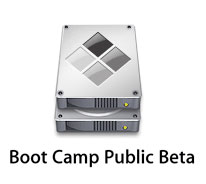"Sleep Camp" nixed, you still have to reboot


Rather than having to shut down the entire Mac OS and and cold boot into Windows (a lengthy process of between 15 and 20 minutes at times), Boot Camp was changed so that you could simply "sleep" Mac OS and log into Windows:
Leopard brings a quicker way to switch between Mac OS X and Windows: Just choose the new Apple menu item "Restart in Windows." Your Mac goes into "safe sleep" so that when you return, you'll be right where you were. It's much faster than restarting the computer each time. Likewise, a "Restart in Mac OS X" menu item in the Boot Camp System Tray in Windows makes for a faster return to Mac OS X. With Windows hibernation enabled, you can pick up where you left off.
In an unusual move, Apple has seemingly pulled the "faster restarts" feature and removed it entirely from the Boot Camp page. MacRumors has posted the original page from the Google cache.
The feature was halfway to fully virtualizing Boot Camp (Virtual Camp?) like I suggested might do in my pre-WWDC predictions piece.
So why did Apple kill off Sleep Camp?
Was it because Boot Camp program manager "freaked out?" Or did Parallels and VMWare cry foul that Apple was stealing their third party developers technology? Will "Sleep Camp" come back for the final release of Leopard?
Conspiracy Theorists unite!